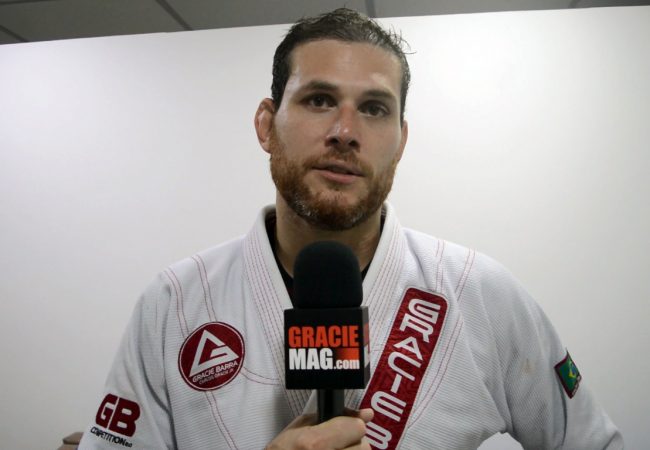[First published in 2008. Part of the Training for Warriors series, by Martin Rooney*]
Impenetrable: Incapable of being penetrated or pierced; not admitting the passage of other bodies.
I have been told that we have one mouth and two ears because we should listen twice as much as we speak. When I look for new ideas to write about, I have learned to keep my two ears open when discussing fighting and training with my combat athletes. My technique is that if I hear the same thing over and over again from different people that I respect and trust, instead of giving my immediate opinion, I start to investigate that topic. This technique has led me to many breakthroughs in understanding combat sports including my recent revelation about takedown defense. Over the last 6 months, many fighters around me started noticing that a higher proportion of MMA fights were no longer going as often to the ground and even some high level Jiu-Jitsu matches were being decided by a takedown or throw. This prompted me to start the investigation that led to this article.
Today, hearing announcers remark that many fights are pure standup battles is becoming more commonplace. This was not always true in the young sport of MMA. Only a decade ago, the takedown and ground game reigned supreme. Then over time, the art of takedown defense entered the game. As fighters began to stop being forced to the floor, the standup game opened and the age of “sprawl and brawl” was born. Fighters such as Chuck Liddell and Mirko Cro Cop paved the way with this style for current fighters like Anderson Silva, Georges St. Pierre and BJ Penn that use a great defense to set up their offense.
“The only thing that should be left open in your defense is your mind.”
To convince the reader that takedown defense is a necessity in combat sports, he or she simply needs to understand what role takedown defense plays in the current game of combat. Below is a list of 5 compelling reasons why becoming impervious to the takedown has become critical to successful combat:
1. Takedown defense allows a fighter to dictate the fight
If a fighter has great takedown defense, he has the ability to decide if the fight will stay on the feet or go to the ground. Granted, as UFC fighter Frankie Edgar states, “defense against the takedown can dictate the fight, but that fighter must not forget that he must have great striking or ground game on both sides of that skill”.
2. Takedown defense can set up your striking
With the ability to shut an opponent’s shot down, now that opponent is forced to stay on the feet and fight standing. In the case of a Chuck Liddell or Anderson Silva, these athletes used their takedown prevention to stymie opponents and then set them up for powerful strikes.
3. Takedown defense can set up your own takedowns
By shutting down an opponent’s takedowns, the athlete may then believe you don’t want to go to the ground. That opponent may then leave himself open to be taken down. A great example of this was in Chuck Liddell’s fight with Wanderlei Silva. Just when everyone (the crowd and Wanderlei included) thought that Chuck would never attempt a takedown, he took an open Wanderlei down and this uncharacteristic takedown contributed to Chuck’s win in their very exciting fight.
4. Takedown defense opens up your opponent to make mistakes
When a fighter that is looking for a takedown keeps getting denied, he will often get desperate and, unfortunately, careless. In the case of Matt Hughes’ last few fights with Georges St. Pierre and Thiago Alves, Matt was unable to secure takedowns which led him to take poor shots from far away. This opened him up to be taken down and, in both fights, taken out.
5. Takedown defense can be used to tire out and break the will of your opponent
Working hard for a takedown and then not achieving that goal can be both tiring and disheartening. A fantastic example of a fighter that uses this frustrating style is BJ Penn. BJ uses his incredible flexibility and balance to tire out opponents going for takedowns and uses this to his advantage to often get on top during his fights. In his recent fight with Sean Sherk, BJ shut Sherk’s takedowns down and dominated the fight on the feet.
Building the physical fortress
To develop great takedown defense, there are number of physical requirements that must be achieved. First, an athlete must obviously possess good reaction time. This is developed with practice and being able to recognize shots when they are coming. In addition to this, the athlete must have great strength particularly in the legs and core. If the opponent does get initial penetration with a shot, this strength may be what is needed to stop the takedown from being completed. The most important muscles in the legs would be the glutes, quads and hamstrings. Flexibility in the hips and legs is also a favorable trait for stopping the takedown. The more range of motion a fighter has to work with, the harder his opponent has to work to get him down. A final physical trait is balance and coordination. Often the athlete will be on one leg being quickly moved backward. Balance during this event may be what makes the difference of being against the cage or on your back.
Defense is a skill
For combat sports, there are a number of simple components that make up the physical skill of good takedown defense. The first line of defense is coupling the developing reaction time with the ability of quickly lowering your level. Through technical practice, you must develop the motor program of dropping your center of gravity when your opponent shoots. Depending on how well your opponent’s attack is, the next component is learning to control your opponent’s head and driving it downward away from your body. The lower you can press your opponent’s head, the more difficult time he will have securing a takedown. In addition to dropping level and head control, sprawling with the legs back, shoelaces down, hips forward and chest up is an essential skill to stop the takedown.
Attack of the defensive workout
During this 5-exercise workout, you will be working all of the attributes needed to start addressing your takedown defense: technique, flexibility, balance, strength and conditioning.
1. Sprawls
This is a drill to work on reaction time and technique. To perform the sprawl, the athlete must first lower his level and push the hip the opponent is attacking forward into the ground. The athlete can support his body with his hands and make sure that the feet are kicked back simultaneously. Make sure that the shoelaces are down. Perform 3 sets of 15 sprawls.
2. Single leg circle hops with partner
This is a great exercise to develop flexibility and balance. Your partner will lift one leg and you must then balance on the foot on the floor. You must attempt to hop around your partner as he changes the height of your foot. Perform 2 sets of 3 revolutions on each side.
3. Cross-over step-up
This is excellent for developing hip abductor and leg strength. The athlete will stand along side a box and put the outside foot on top. Without using force from the bottom leg, step up onto the box from the side. Then lower back under control. Dumbbells can be used and perform 3 sets of 6 reps each leg.
4. Power high pull
This exercise develops power in the hips. Begin with the feet and hands shoulder width apart. Explode up as fast as possible and pull the bar to chin height. Lower under control and perform for 3 sets of 8 reps.
5. Single leg deadlift
This exercise is designed for single leg strength and balance. Begin by standing on one foot and slowly lower the torso at the waist. Raise the free leg to parallel with the ground and perform 3 sets of 6 reps on each leg.
When you have great takedown defense, you have opened up options for yourself to dictate the fight. Whether you are a Jiu-Jitsu player, judoka, wrestler, or MMA fighter, you will someday have to call on this skill to change the flow of the battle and set you up for victory. A final lesson I learned long ago was, “Better to have it and not need it, than need it and not have it.” Get to work on this skill warriors, so that the day you go to your artillery, this defensive weapon is at the ready!
***
* Martin Rooney is the founder of the Training for Warriors system and has trained champion fighters for the UFC, Pride, ADCC and Olympics. His TFW fitness program is used in over 175 facilities in 25 countries around the world. Information about TFW certifications at trainingforwarriors.com.




